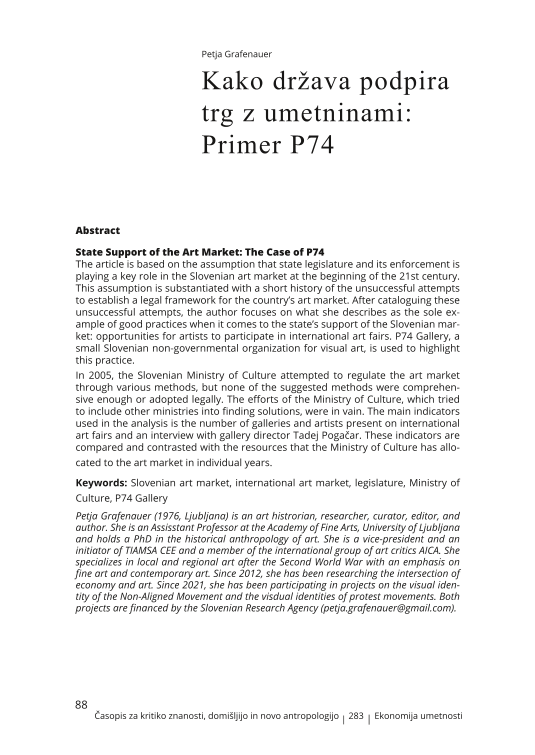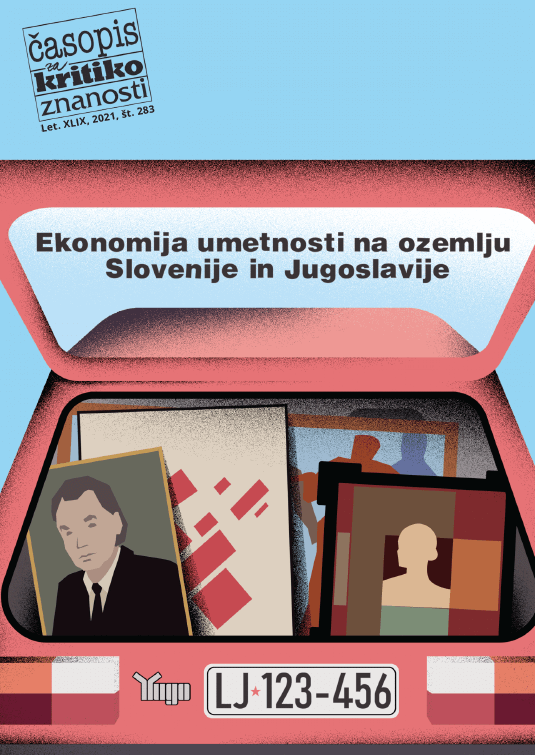The article is based on the assumption that state legislature and its enforcement is playing a key role in the Slovenian art market at the beginning of the 21st century. This assumption is substantiated with a short history of the unsuccessful attempts to establish a legal framework for the country’s art market. After cataloguing these unsuccessful attempts, the author focuses on what she describes as the sole example of good practices when it comes to the state’s support of the Slovenian market: opportunities for artists to participate in international art fairs. P74 Gallery, a small Slovenian non-governmental organization for visual art, is used to highlight this practice.
In 2005, the Slovenian Ministry of Culture attempted to regulate the art market through various methods, but none of the suggested methods were comprehensive enough or adopted legally. The efforts of the Ministry of Culture, which tried to include other ministries into finding solutions, were in vain. The main indicators used in the analysis is the number of galleries and artists present on international art fairs and an interview with gallery director Tadej Pogačar. These indicators are compared and contrasted with the resources that the Ministry of Culture has allocated to the art market in individual years.




